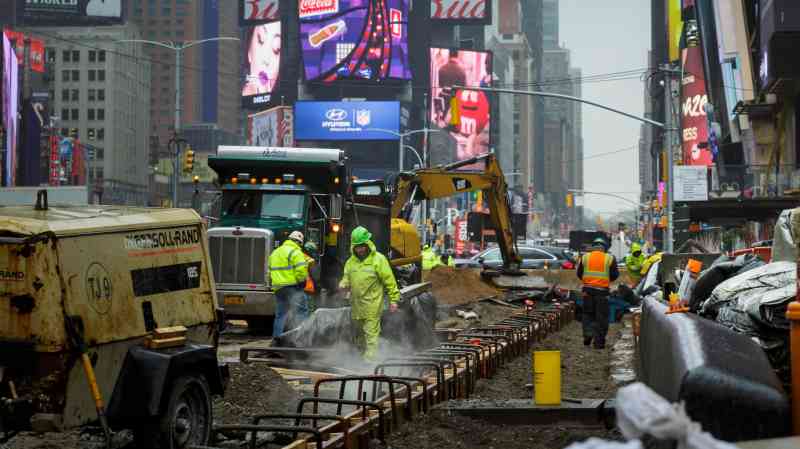The US economy generated fewer jobs than expected in August and July, stoking fears of a slowdown in the world’s largest economy and increasing the chances of a bumper interest rate cut this month.
Monthly US payrolls figures for August came in at 142,000, below a 160,000 estimate from polled economists, while July’s initial figure of 116,000 was downgraded to 89,000, according to the US Bureau of Labor Statistics.
The unemployment rate, which is also closely watched by rate-setters, dipped from 4.3 per cent to 4.2 per cent after a surprise jump in July. A measure of hourly earnings rose by 0.4 per cent on the month, up from 0.2 per cent in June, with yearly wage growth up to 3.8 per cent from 3.6 per cent.
The construction industry and the healthcare sector hired more workers during the month. Hiring at manufacturers declined but there was little change in the mining, oil and gas, retail, and transportation sectors.
The monthly jobs figure has the most closely-watched data point in the world’s largest economy after an undershoot in July’s payroll figures triggered a global stock market rout and concerns over an imminent US recession.
The August jobs figure, combined with a total downward revision for June and July, will increase the chances of an outsized half a percentage point cut to interest rates from the US Federal Reserve this month. The June payrolls figure was revised down by 61,000 to 118,000.
Investors snapped up US government bonds and sold the dollar in anticipation of a major dose of monetary easing this month. Yields on two-year Treasury bonds fell by 7 basis points to 3.66 per cent and slid by 4 basis points on benchmark 10-year bonds to 3.67 per cent. Yields fall when a bond’s price increases.
The dollar weakened by 0.4 per cent against a basket of major currencies, pushing up the pound by 0.3 per cent to $1.32 against in Friday afternoon trading. US stocks were poised for losses at the opening bell, according to pre-market trading.
Jerome Powell, chairman of the Fed, last month all but confirmed that the central bank will cut interest rates at its next meeting on September 18, the first time it will loosen monetary policy in four years over concerns about a slowing labour market.
Traders ramped up their bets on the Fed carrying out a half a percentage point cut to borrowing costs, which have been held at a two-decade high of 5.25-5.5 per cent for the last year. The probability of a larger monetary easing in September rose from 43 per cent to 49 per cent on Friday, with investors expecting around three more rate cuts before the end of the year.
Powell has said that worries about the state of the labour market are the most important driver of the monetary policy outlook, after inflation fell from a peak above 9 per cent in 2022 to 2.9 per cent in July.
